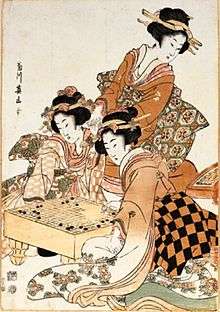
Go is thought to be the world's most ancient board game, with deceptively simple rules that lead to deep strategy. After centuries of play, new ideas about the game are still being developed on a regular basis.
The game is believed to have originated in China, and is still most popular in East Asia, particularly Korea, Japan, and China. In Korea, it is called 바둑 (Baduk), pronounced pa.tukʰ, Japan where it is sometimes known as 囲碁 (I-Go), pronounced i.ɡo, and China, the game's original home, where it is named 圍棋 (trad.) / 围棋 (simp.) / wéiqí (Pinyin) pronounced ueɪ2.tɕʰi2. Each of these three countries have professional associations that allow individuals to hold the status of a professional Go player. It enjoys a small but rising popularity in other parts of the world.
Table of Contents
Introduction
Beginners
Intermediate
- Lesson 3: Fuseki
- Lesson 4: Joseki
- Intermediate strategy
Advanced
- Advanced strategy
- Tutoring